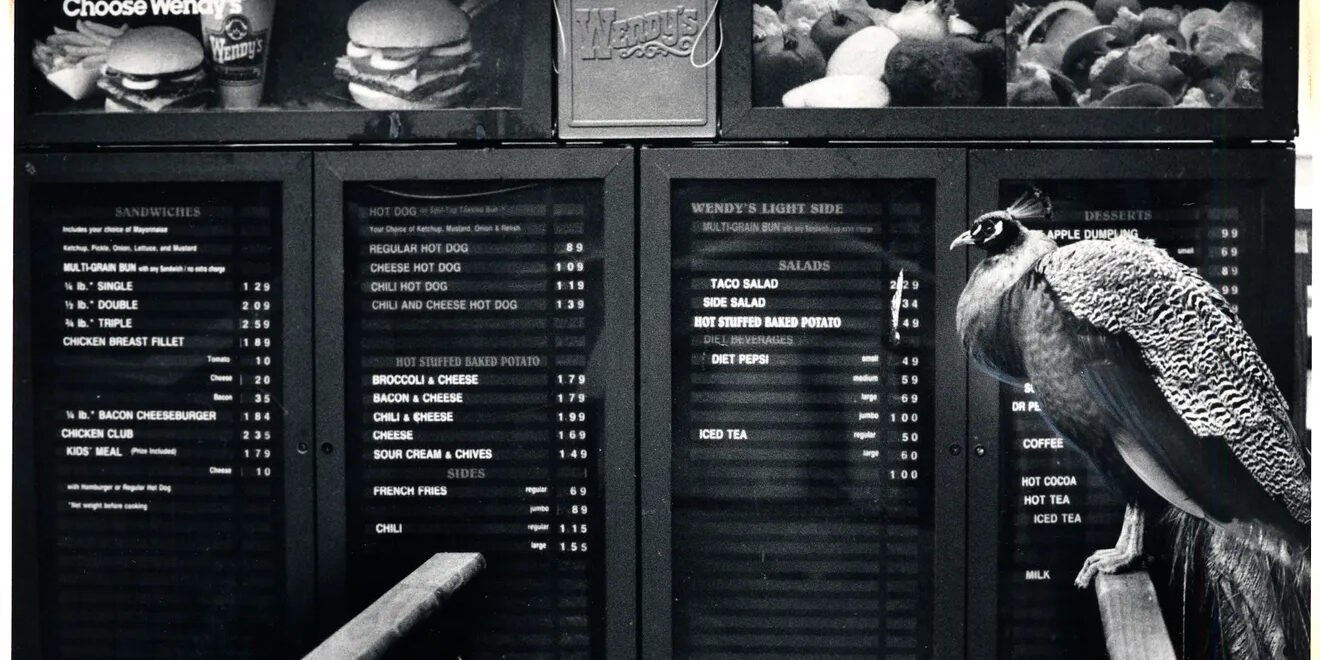Southern California has given the world so much. And fast food too

In-N-Out started in Baldwin Park — one of many Southern California-born fast-food mainstays. (Christopher Reynolds / Los Angeles Times)
From the L.A. Times: In the history of everything, there have been two Big Bangs.
One happened 13.8 billion-some years ago, and it created the universe.
The other one happened in mid-20th-century Southern California, and it created Fast Food America, a universe of its own, with a constellation of burger-and-burrito chains, all composed of the basic elements of salt, fat, sugar and pleasure.
It’s pretty obvious what birthed this second Big Bang in postwar California: a vertiginous economy, spreading suburbia, and cars — cars with fins and radios and young drivers, teenagers and nuclear families, all mobile, and all hungry for easy eats.
An Ode to Hotel Rooms

From The Atlantic: Always different, always the same.
Which is to say, whatever the size or mood or condition of the room, whether there’s hair coiled blackly in the bathtub or an orchid in a vase on the table, what greets you as you open the door, every time, is a neutral waft of possibility. A sense of your self-in-waiting. Who are you going to be in here ? As you mingle with this careful anonymity, as you drift and lightly settle into this fancy or not-so-fancy non-place, what might happen?
‘The Automat’ documentary looks back fondly on a defunct eatery

Visitors to New York City select their dishes at a Horn & Hardart automat in an archival image from the documentary “The Automat.” (Stan Wayman/The Life Picture Collection via Getty Images/A Slice of Pie Productions)
From The Washington Post: For some audiences, the title of “The Automat” will tell them nearly everything they need to know; for others, the word will read like ancient Aramaic. Both constituencies will be gratified by Lisa Hurwitz’s crisp, straightforward documentary, which tells the story of a bygone and beloved institution that revolutionized dining and embodied American ideals at their most egalitarian and pluralistic.
A brief primer: In 1902, food service entrepreneurs Joseph Horn and Frank Hardart introduced a new concept in Philadelphia: a restaurant in which customers could feast their eyes on a range of freshly made entrees, side dishes and desserts sitting behind small glass doors; put coins into a slot; and pull out the delicacy of their choice — usually accompanied by a perfect cup of coffee that came out of a dolphin-headed spigot and cost a nickel.
Balmoral Hotel neon sign may be preserved after building demolished

The Balmoral Hotel neon sign on East Hastings Street in Vancouver on March 29. PHOTO BY ARLEN REDEKOP /PNG
From the Vancouver Sun: The Balmoral Hotel was one of Vancouver’s most notorious SROs before the City of Vancouver closed it down in 2017. Now owned by the city, the building has deteriorated so badly that Vancouver has decided to tear it down, rather than rebuild it.
But it once was a very elegant structure, with one of Vancouver’s tallest and most striking neon signs. The four-storey-high sign is looking as rough as the building — the paint is peeling off its metal facing, and its neon hasn’t been turned on in years.
But neon expert John Atkin says the sign is still intact, and hopes it can be saved and resurrected on whatever building replaces the Balmoral at 159 East Hastings St.
Cool Springs Park keeping Roadside America traditions alive

Cool Springs Park photo
From NCWV Life: ROWLESBURG — The winding, mountainous roads of West Virginia are often pathways to some unusual, peculiar destinations. One of these destinations if Cool Springs Park.
Cool Springs Park is a family-owned, antique-filled park, restaurant, general store, farm and family gathering place located 10 minutes from the town of Rowlesbug that holds a special place in the hearts of locals and tourists alike.
Wendy’s made fast food history when it opened at Columbus Zoo in 1985

A peacock checks out the menu at the Wendy’s restaurant at the Columbus Zoo in this photo from 1986. Tom Dodge/Columbus Dispatch
From the Columbus Dispatch: The nation’s first fast food restaurant chain to be located inside a zoo was none other than Columbus’ own Wendy’s and at the Columbus Zoo.
The hamburger chain initially took out a 10-year lease there and opened in May 1985 near the great ape enclosure. Framed posters, sent from zoos around the world, decorated the walls. The location would go on to have a 13-year run.
Four-year-old elephants Boomer, left, and Belle in front of the new Wendy’s restaurant at the Columbus Zoo in this photo from 1985.
Doral Chenoweth, the Dispatch’s restaurant columnist (otherwise known as “The Grumpy Gourmet”), wrote in jest after a 1992 visit that Colo the gorilla wasn’t the biggest draw at the zoo that day. Neither were the two giant pandas on loan from China at the time.


